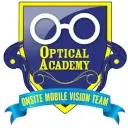
Photo by DreamDigitalArtist on Pixabay
What is 20/20 Vision?
20/20 vision, also known as normal vision, refers to the clarity or sharpness of vision at a distance of 20 feet. In other words, if you have 20/20 vision, you can see clearly at 20 feet what an average individual can see at the same distance.
Visual Acuity
The concept of 20/20 vision stems from the term “visual acuity”. Visual acuity is the measure of the sharpness of a person’s vision. It’s determined by the ability to identify letters or numbers on a standardized eye chart from a specific viewing distance. Visual acuity is tested one eye at a time, with the help of corrective lenses if needed.
The Snellen Chart
The most common tool used to measure visual acuity is the Snellen chart. Developed by Dutch ophthalmologist Herman Snellen in the 1860s, this chart contains 11 lines of block letters that decrease in size as you move down the chart. The top number represents your distance in feet from the chart, while the bottom number corresponds to the distance at which a person with normal vision can read the same line.
Not Quite Perfect Vision
Contrary to popular belief, 20/20 does not mean perfect vision. It simply implies normal visual acuity. A person can have 20/15 vision, which means they have sharper than average vision. They can see at 20 feet what the average person can only see at 15 feet. It’s worth noting that only about 35% of adults have 20/20 vision without corrective aids such as glasses or contact lenses. With correction, this percentage goes up to 75%.
Beyond 20/20 Vision
So, if 20/20 vision is not perfect, can your vision be better than 20/20? The answer is a resounding yes. Some people have 20/15 or even 20/10 vision, which means they can see at 20 feet what most people can only see at 15 or 10 feet respectively.
The Importance of Good Vision
Having good vision is not just about seeing clearly. It’s also about safety, comfort, reading ease, and overall quality of life. It’s worth noting that in most U.S. states, the minimum requirement for an unrestricted driver’s license is 20/40 vision.
Vision Tests
Despite the focus on 20/20 vision, an eye exam involves much more than just testing visual acuity. Other aspects of vision that are tested include peripheral awareness, eye coordination, depth perception, and color vision.
The Global Perspective
The 20/20 vision scale is not used universally. Outside the U.S., eye care professionals measure vision in meters instead of feet. Therefore, the equivalent of 20/20 vision in these countries is 6/6.
Conclusion
In conclusion, 20/20 vision is a measure of visual acuity rather than a definition of perfect vision. It’s important to have regular eye exams to maintain good vision and detect any potential issues early. After all, clear vision is more than just seeing 20/20.


Worksite
All Employees Served With Direct Vision Care All In One Day At Their Worksite!.
Glasses2Classes
Vision screenings, eye exams, and eyewear for all students at their schools!
Community Events
Provide Easy Access To Eye Care & Eyewear for Your Entire Community!
At Home
Skip the trip! We travel directly to all fragile homebound patients!